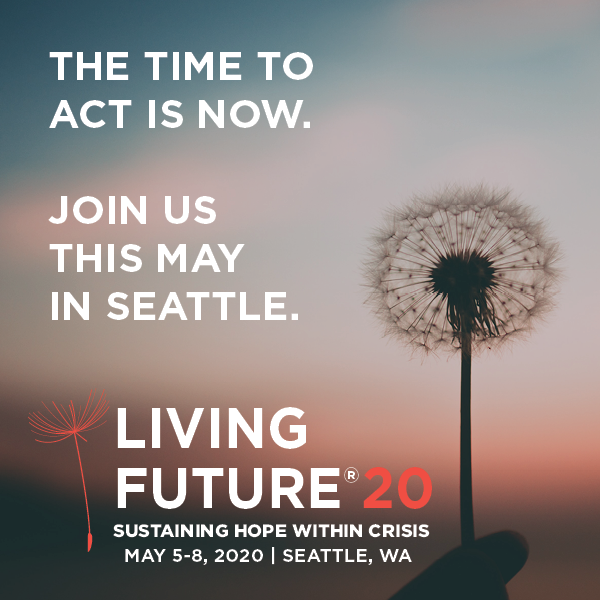Kids These Days
Editor’s note: This article is republished with permission from Love + Regeneration, a publication from the regenerative design practice McLennan Design.
On May 1st, 28 high school students and 4 chaperones, including myself, arrived in Seattle (Duwamish Territory) on a perfectly sunny, spring day after a 15-hour bus ride from Calgary, Alberta (Treaty 7 Territory, traditional home of the tribes within the Blackfoot Confederacy). The stated purpose of this field trip was to learn more about green building technologies and green design. The unstated purpose of the trip was far more than that.
After spending fifteen or more hours on a bus, we ended up in Seattle to attend the Living Future Conference. Although the ride was extensively long, the importance behind being involved in change for this group of students far outweighed the inconvenience.
– Abby Storrow, Energy + Environmental Innovation Student
I co-teach (with Lauren Elliott) a public high school program called Energy and Environmental Innovation (EEI) in Calgary. The program is available to all high school students across the city through a unique career pathway strategy started by the Calgary Board of Education years ago. This Energy and Environmental education is not a common program style offered to students in Calgary or in the province. In fact, we are one of three remaining Natural Science based programs (other than eco-clubs) in the province. That being said, our students accomplish an amazing amount. They all work on real community-based projects to improve everything from food security to Indigenous rights to energy efficiency.
Our program, and school in fact, has been recognized by the Canadian Green Building Council as the Greenest School in Canada. Thanks to the work of our students, I recently received the distinction of Canadian Environmental Educator of the Year. The Office of Economic Cooperation and Development and America Achieves recognized our program as “world-leading.” The list goes on and on from the last six years that the program has existed. In my eyes, it’s quite simple. We are demonstrating that by simply giving an opportunity to students to create real solutions for real problems, amazing things can happen.
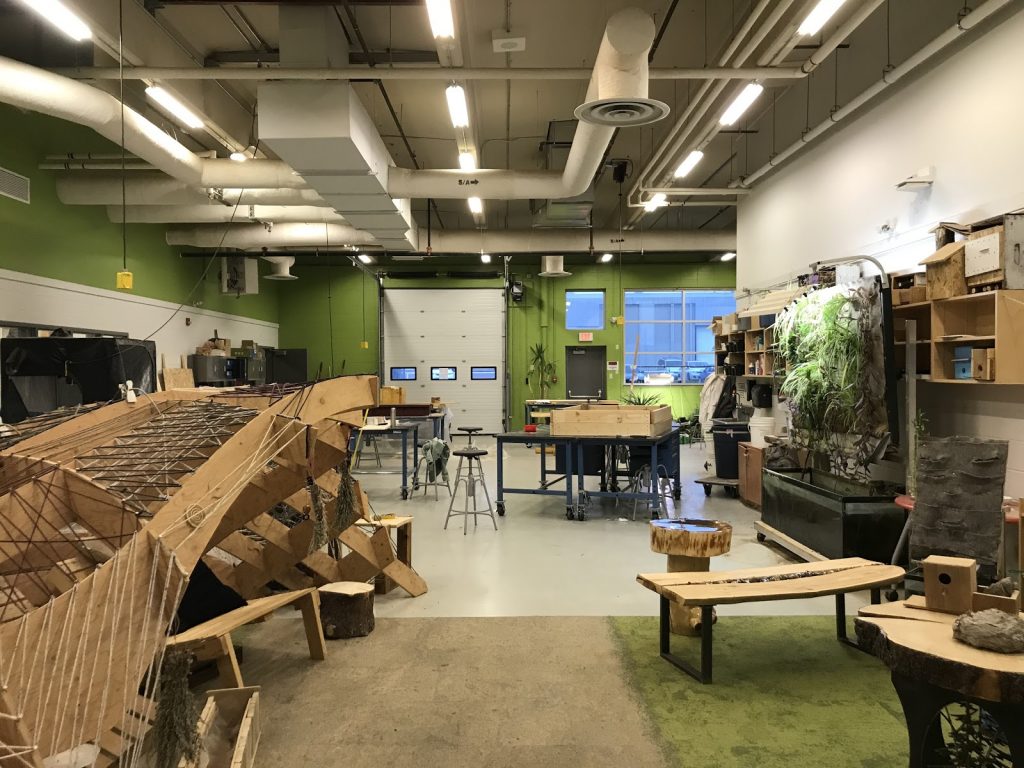
We’ve collaborated on projects with various Environmental NGO’s, government agencies, major energy companies (Enmax, Cenovus, Suncor, Chevron, BP, etc.), other schools (at all levels), local Reserves and many more. One of the only rules around the project-based learning that we have in place is that for every project, students must work with an outside expert or organization to help create real change. Every adult that visits our living laboratory says the same thing: “I wish I had this when I was in school.”
All that being said, the general tone in our class discussions is defeatist. In response to events in the news we talk about, I regularly hear things like:
“People are so stupid and selfish.”
“I would never bring kids into this world.”
“We’ll all be dead by then anyway.”
Even students who are making real change, who are seen as leaders in our community, say things like this. From what I can tell, these anxiety and fear-based statements come from a place of distrust. The feeling that even with all the evidence in the world, decision-makers will still not help to create change. They have a strong feeling that their voices don’t matter.
Being an Albertan youth environmentalist with a family background of oil and gas and living in a place where roughly a quarter of jobs are related to oil and gas, you can imagine how hard it is to feel like my voice is being heard.
– Abby Storrow, Energy + Environmental Innovation Student
Alberta currently holds the 3rd largest proven reserve of oil in the world thanks to the rich deposits along the Athabasca River where the oil literally seeps out of the sand along the banks. Climate science, while accepted by most major energy companies—many of which have headquarters within 5 miles of our classroom—is still a debatable issue amongst many in our province.
Days before our departure, Alberta held its election. The focal issues of the election were centered around the energy industry as you might expect. The United Conservative Party won a decisive victory on a platform that promised to cut the carbon tax, expedite new pipeline projects to get our resources to tide water, cut red tape (Ministry of Red Tape Reduction – not in conjunction with Monty Python) around the energy industry, and create a $30 million war room to fight misinformation coming from opponents of the oil and gas industry. The war room would be funded mainly from the remaining levies on major industrial emitters. I (heart) Alberta oil stickers have become the most common bumper sticker.
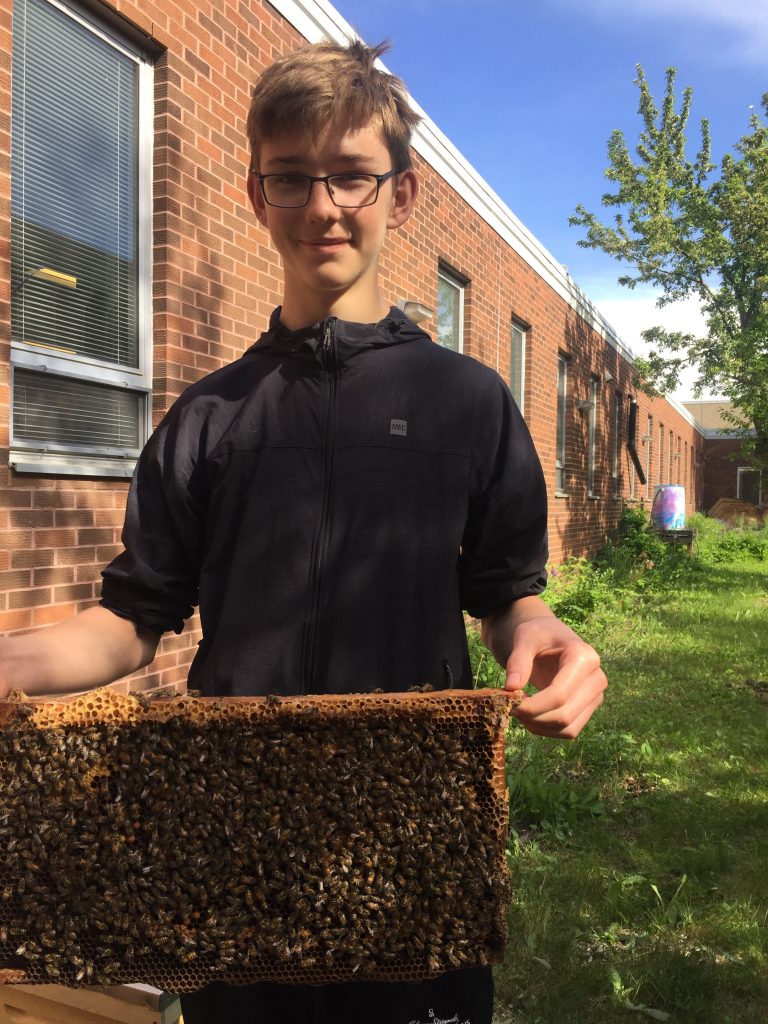
Energy and Environmental Innovation student Simon with a honeycomb panel. 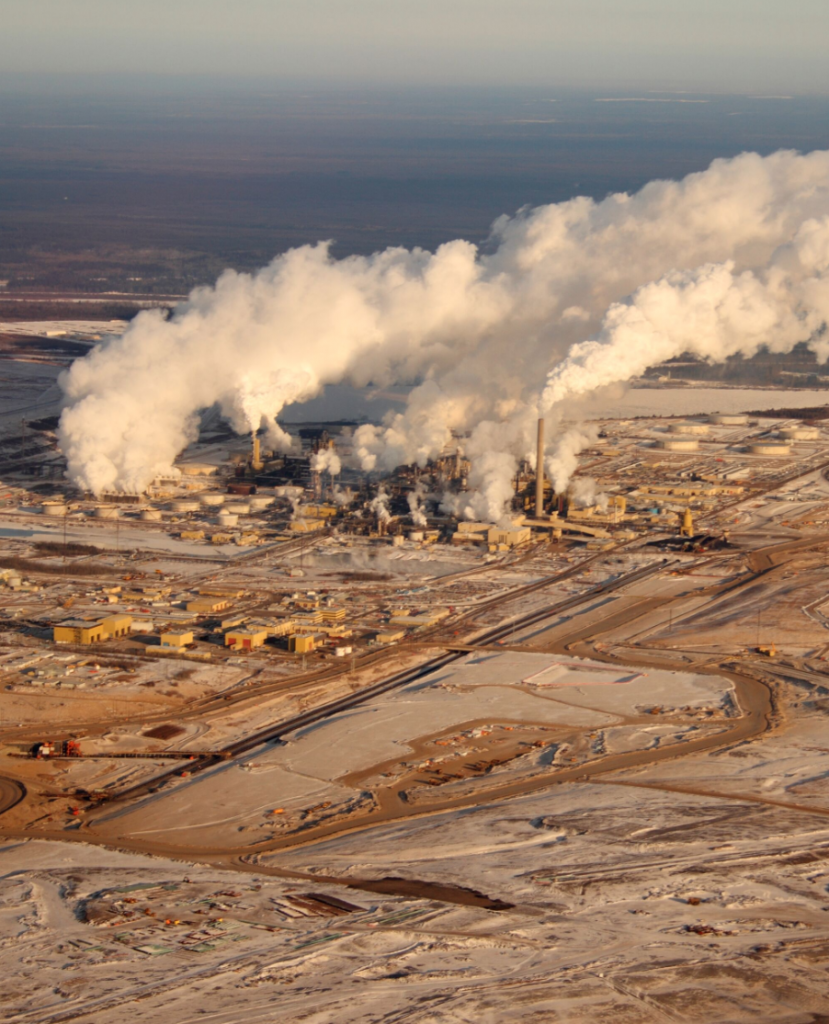
Oil sands development in northern Alberta.
Concurrently, a youth awakening in the climate crisis has occurred worldwide. Led by the courageously stubborn Greta Thunberg, Friday school strikes have reached Alberta too. Perhaps these strikes and marches aren’t as big as in other places, but they are happening. Some of our students help organize these #fridaysforthefuture. Most of our students say they prefer not to hold signs and march. Simon said he’d rather learn to become a beekeeper and was helping his family get their first hives this spring.
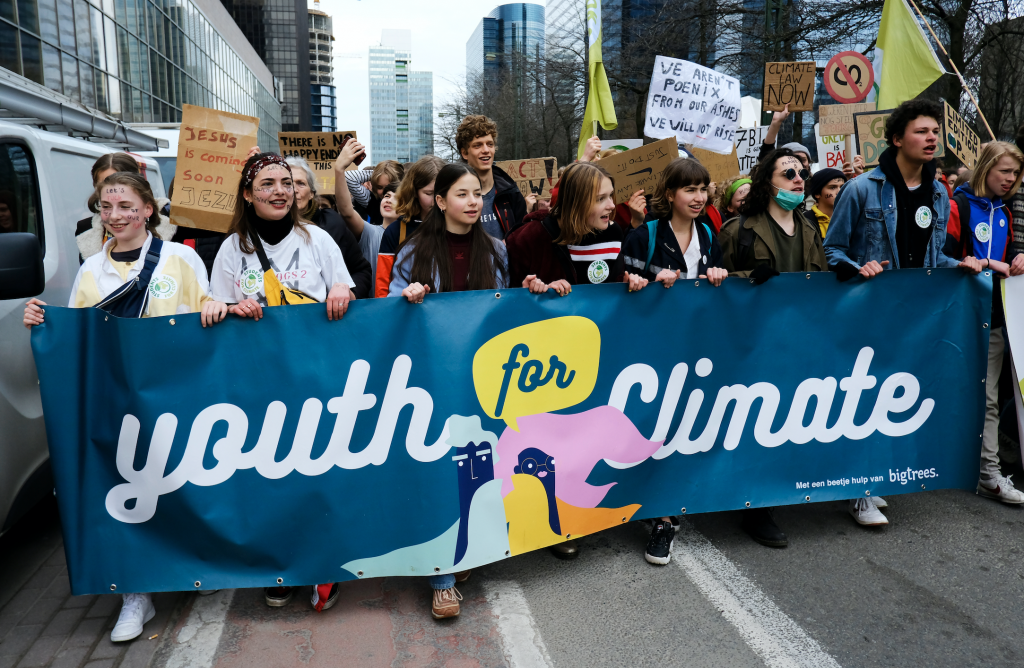
The reassurance that there are people who care about the same issues we are passionate about and who work on projects that make actual money while moving towards a green future is refreshing.
– Abby Storrow, Energy + Environmental Innovation Student
Riding 15 hours on a bus to visit Seattle and attending such a forward-thinking conference was indeed an attempt to refresh and reassure these students. It’s not that some amazing green advancements aren’t happening here; ironically while in Seattle we learned about the Calgary Zoo’s panda exhibit earning petal certification! As many of you know, the right field trip experience during your formative years can have a lasting impact and help you better understand your own home.
I brought them to Seattle, a city that is working to embrace living future principles, so they could see examples of what they had been studying and working on in real life. I wanted them to walk the stairs in the Bullitt Center, perhaps the world’s greenest office building. I wanted the wonderful people at Miller-Hull Architecture to change their perception of normal. I wanted them to hear about all of these changes in society from somebody other than me.
We needed to meet with someone like Jason McLennan, a hockey playing Canadian kid from a mining city, who is out there making real, tangible change in the green building industry. I wanted them to hear his story and to hear him swear and get a sense of how much of a stubborn idealist he is (or just stubborn depending on who you ask). So we met with him and he answered every question they had. Most of the questions were anxiety or fear-based questions. When asked about how to maintain hope even though we see and hear so much wrong with the world, McLennan (to paraphrase) told them that he remains resilient through action. As long as he keeps acting to better things and working with good people, he’s going to stay hopeful.
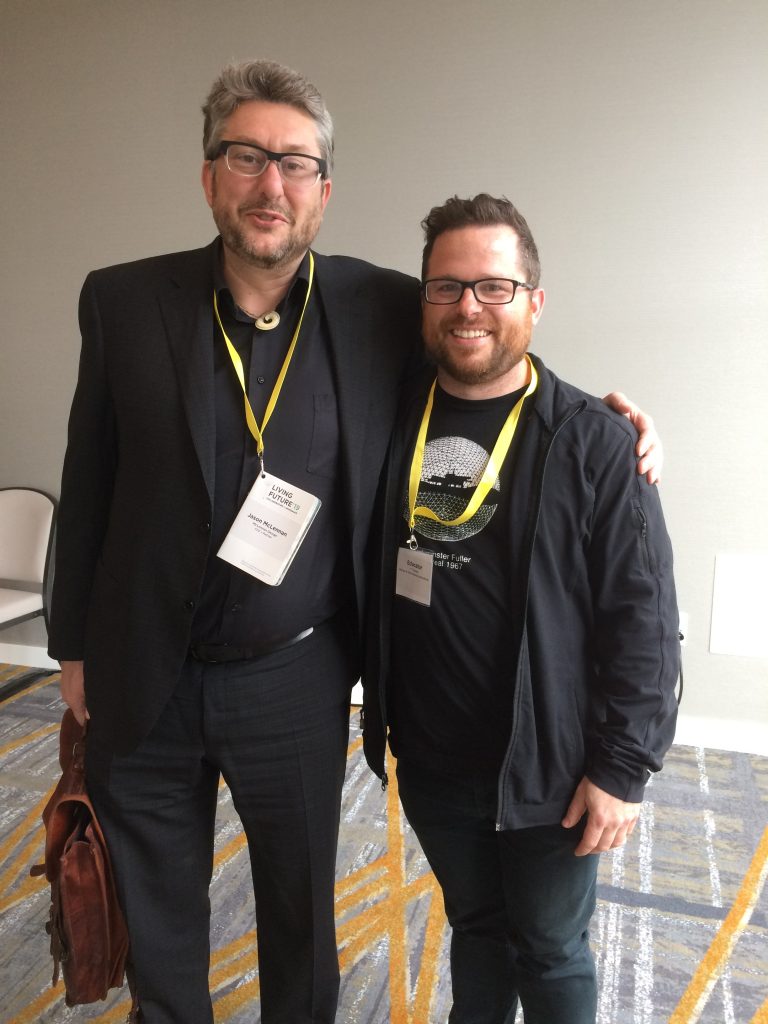
Students can identify with him both because of the swearing and because they feel that if they had his knowledge, they would have started something as well. They would have listened to the warnings from scientists and done something. They can see themselves in him and I think vice versa.
After listening to a majority of passionate speakers one main message came out of it: hope. With the work that we do in our class, mainly community projects or construction pieces that are sold locally, sometimes we struggle to see whether we are having an impact. Seeing examples of living buildings was inspiring. Hearing of corporations or governments that are working tirelessly to motivate climate action was also inspiring and we want to join in.
– Abby Storrow, Energy + Environmental Innovation Student
This was not my first time to Seattle to visit Living Future with students. Bringing students in the past had some tremendous outcomes. Having high school students sit and even present for Living Future attendees is a winning educational formula that I had gotten away from. When teaching in one of the world’s most beautiful towns inside Jasper National Park, I wanted to give these students some “know-how” of how to sustain their unique mountain home for generations to come. The results were incredible. So many of those students who attended those conferences in their high school years have gone on to do some amazing things. When I returned to Seattle this past spring and saw the impact it had on our students, I was reminded of all these incredible outcomes that are possible when students are given the opportunity to take part in these conversations.
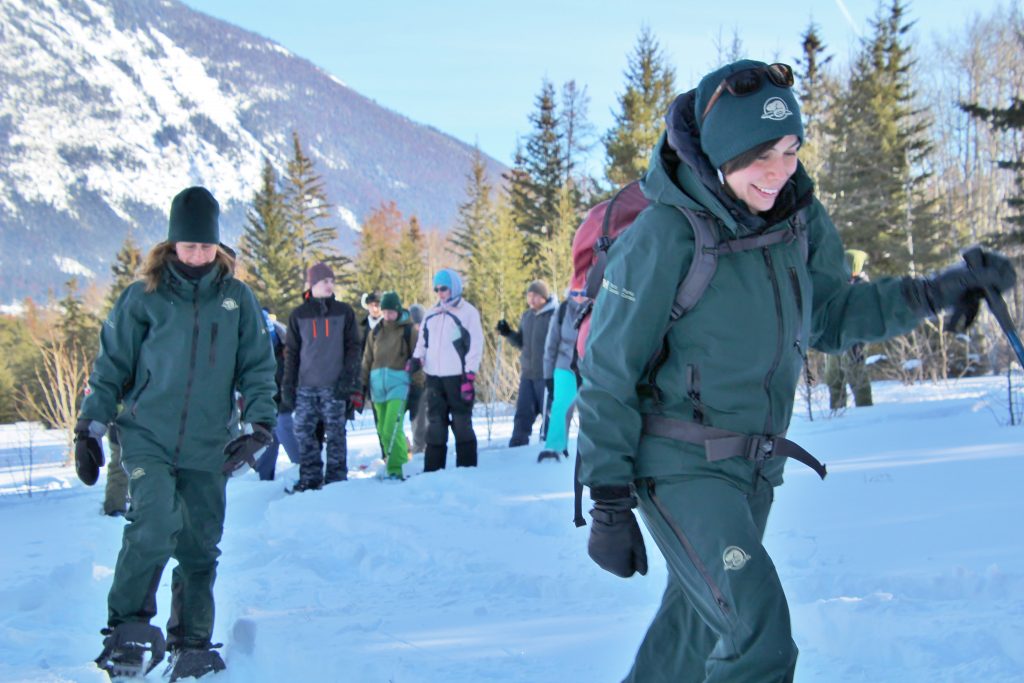
As an educator, green building is the jackpot of educational value. Essentially, the Living Building Challenge forces us to look at problems from many different angles. Creating a certified living building is the ultimate problem to be solved and it requires passions for a variety of things. Such a “problem” can only be solved with a community effort involving designers, artists, builders, scientists, doctors, inventors, manufacturers, government representatives, elders and children. The Living Building Challenge forces us to value the diversity of talents and interests of people in order to respect the diversity of the ecosystems we are impacting.
After touring the Bullitt Center and then meeting with the team at Miller-Hull Architects we started to understand living buildings and all of their purposes. I started thinking about how we spend so much time at school, a time and place where education is meant to be at the forefront, but we are so disconnected from anything living. We can’t move forward with improving education until we start to accommodate for the fact that we are part of nature, not isolated from it because it’s unnecessary or too distracting.
Now, our class is more ready than ever to spread these movements in our own communities. The timing couldn’t have been better. Seeing our new political powers starting to move into action, pushing for pipelines without a climate plan and the backtracking of our education system, our youth voice is needed more than ever. We are beginning to be part of school climate strikes, and that’s just the beginning.
– Abby Storrow, Energy + Environmental Innovation Student
More than anything, the school strikes across the world, along with some other youth-driven campaigns demonstrate that there are some major misconceptions about youth in our society today. The most common misconception of youth is that they don’t care and that they would rather play endless amounts of video games or take a million pictures of themselves. I’ve also heard that this generation is entitled and soft. I think it’s important to remember that most of a child’s behaviors were taught to them somehow. They are not naturally addicted to technology or social media. They are addicted to finding connections and finding self-worth. The thing to know here is that these behaviors are signs that part of their lives are not being fulfilled. They have hungry brains and hungry hearts (let alone how much they eat). They want meaningful experiences and to feel that they themselves are meaningful.
Herein lies an opportunity at an educational level, but also in terms of how we view youth in our society: Let’s get students working together to solve the major issues facing our species. Let’s create opportunities where they can meaningfully contribute to the design and sustainability of our buildings, parks, schools and more. That is what we are doing here in our program. Just giving the opportunities and supporting the students on their own journeys.
We also thought about how the school strikes across the world, our country, and our province are inspiring. However, we also need youth to step up wherever they are and demand more of a living future. Students can’t rebuild their own schools, but they can help to make changes inspired by the petals of the Living Building Challenge.
– Abby Storrow, Energy + Environmental Innovation Student
As we rode the bus home (another 15 hours), when not sleeping or binge-watching The Office, we contemplated a way to bring the energy of the Greta movement to the reality and chaos of real change. How could we help inspire real, community-supported actions behind the school walkouts? Abby and others talked about the potential of schools achieving petal certification within the scope of what students can help to control. What standard could we apply to schools that would be stringent enough to reflect LBC, but would also recognize limitations to student control over a building? How can we have more living schools?
When making projects, students could learn connections to the petals, and how each student’s work could be recognized as part of a bigger movement. We think this involvement will lead to bigger innovations in the future.
– Abby Storrow, Energy + Environmental Innovation Student
A living future requires students to have more knowledge of their place in the world. This includes more of a sense of culture, connections, and knowledge of land. Traveling to Seattle and having such experiences gave our students a better sense of their place in the world and the motivation to share this knowledge with other youth.
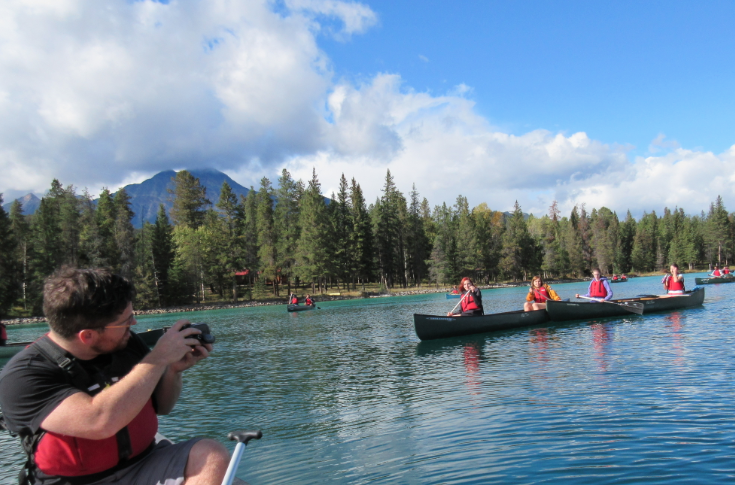
EEI students and teachers start each year by getting into the mountains – this is in Jasper National Park. 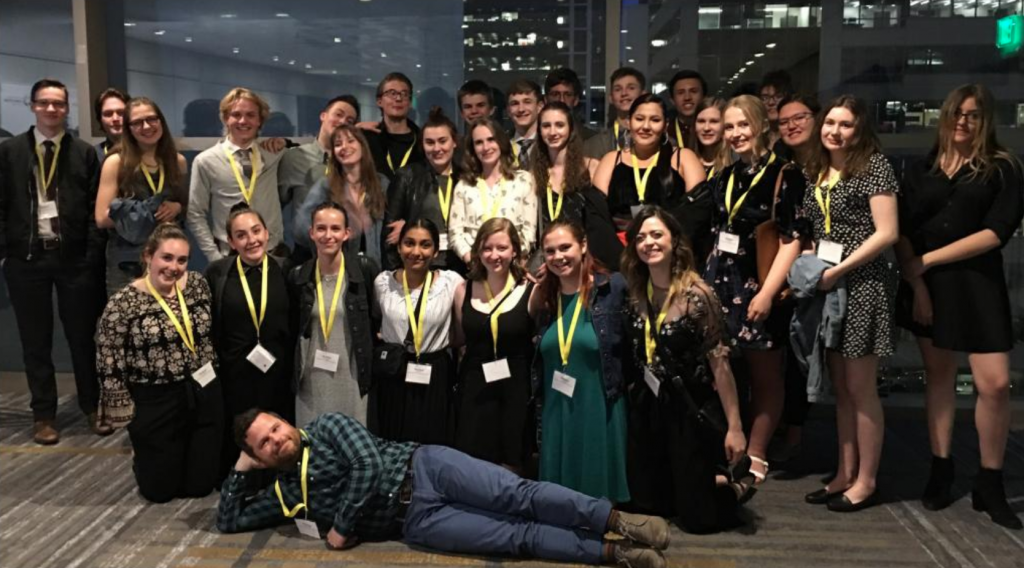
The EEI cohort at Living Future 2019.
They’ve had this incredible experience of seeing what’s possible in a living future while becoming more aware of the challenges our home communities face in order to get there. There are no easy answers to sustainability. However, getting the opportunity to create a brighter future for their family and friends will push these students to do some pretty amazing things, I’d bet money on it.
Despite being up against some difficult odds in a difficult political climate to push for environmental change, they don’t seem as melancholic as they did before. What’s interesting is that the more the students do, the more our own community throws support at them. Everyone we meet wants to support these youth change makers and are envious of the opportunities that these students have been given. So perhaps the best way for voices to be heard is to just start working on the solutions.
Youth need to understand where they come from. They need to understand how they live impacts the environment and their own health. They need more connection.
– Abby Storrow, Energy + Environmental Innovation Student
Abby and her classmates are ready to get going at the start of next school year. They are collaborating with the Alberta Chapter of the Canadian Green Building Council to get youth from across the province to participate in this year’s Alberta Sustainable Building Symposium. They are working to create an indoor community garden on our school site to make up for the fact that our grow season is so short. They have an order in to change all the bulbs in our school to LED’s. They applied for more solar. They are planning a “Canadian Rockies Youth Summit” to talk about the future of national parks like Banff, Jasper, Yoho, Glacier and Waterton. They are pushing for more education like their own across the province. And so much more.
They are doing real things, solving real problems and, as we all do in the real world, making real mistakes. But they know what a living future can look like and this makes such a big difference. The drive was worth it.

